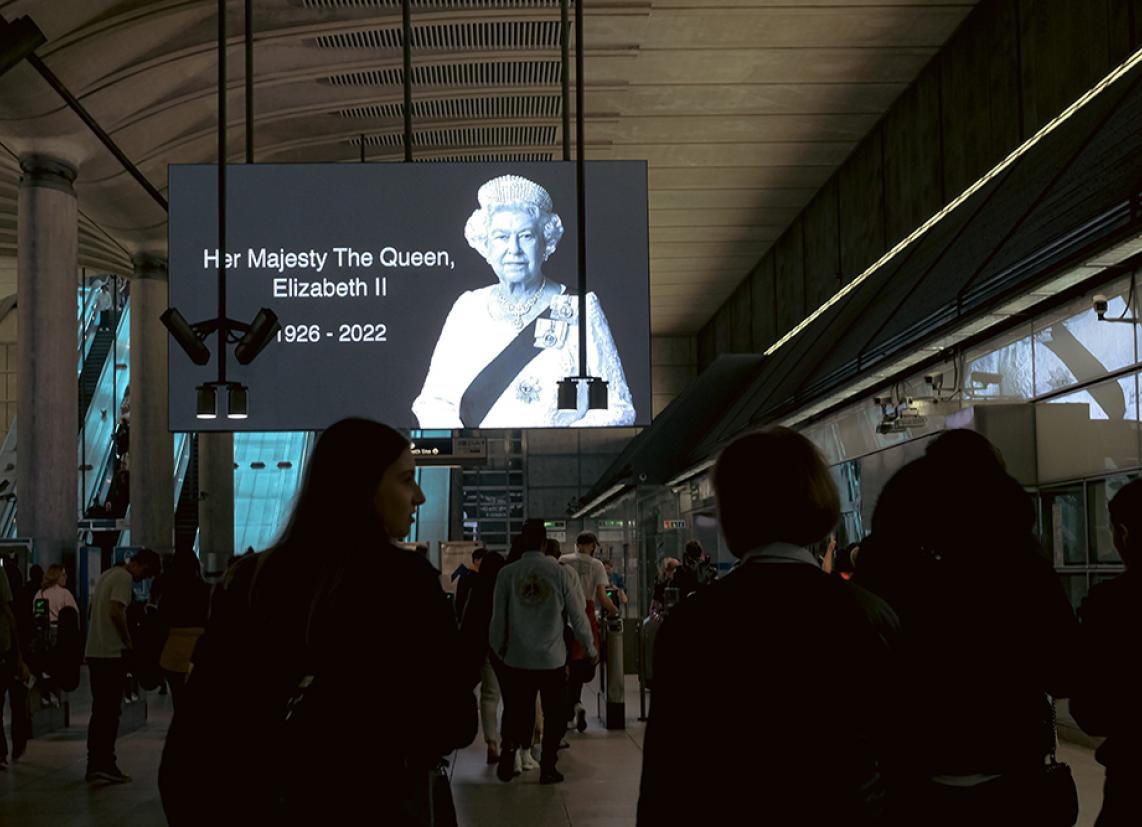The Queen, the Brand

Queen Elizabeth II’s death has led the media and public to appreciate the extraordinary longevity of her reign. As the Guardian writes, “Since ascending to the throne in 1952, the mother of four worked as a mechanic and military truck driver during World War II, talked politics with 15 prime ministers and 13 U.S. presidents, led 53 Commonwealth countries and welcomed eight grandchildren and 12 great-grandchildren.”
Perhaps her greatest achievement, however, was how shrewdly she presented herself to the world. “Queen Elizabeth II took advantage of new mass media tools that emerged over the course of her 70-year reign, from radio broadcasts to televised addresses,” Fast Company writes. “All of these branding efforts appeared to work: While support for the monarchy has been on the decline in Britain, the Queen herself was highly popular until her death.”
In August 2021, MyLondon wrote, “Queen Elizabeth … by herself … ranks as the fifth ‘most successful’ brand, more successful than the likes of Oprah Winfrey, the Kardashians and the Beckhams.” That said, her brand hasn’t survived unscathed. She is an object lesson in why any brand – a person, product or place – must be sensitive to shifting public sentiment and the demands to recognize the past.
The Queen was a figurehead brand, similar to other national symbols like France’s Marianne or even Uncle Sam. By definition, these brands are devoid of any real meaning beyond being a vague personification of a country. It’s why the Queen never commented on contemporary political or cultural issues and remained inscrutable for much of her reign.
The problem with this? The Queen was unchanging in a world that was reimagining the way we talk about empire and monarchy. Any brand that doesn’t engage in a conversation with its consumers risks irrelevance.
The way in which Britain built and maintained its empire complicates the Queen’s legacy. “While Elizabeth ruled as Britain navigated a post-colonial era, she still bore a connection to its colonial past,” NBC News writes. Some viewed her reign as a smokescreen. “For the queen was also an image: the face of a nation that, during the course of her reign, witnessed the dissolution of nearly the entire British Empire into some 50 independent states and significantly reduced global influence,” The New York Times writes. “Her presence as head of state and head of the Commonwealth, an association of Britain and its former colonies, put a stolid traditionalist front over decades of violent upheaval. As such, the Queen helped obscure a bloody history of decolonization whose proportions and legacies have yet to be adequately acknowledged.”
The Queen’s brand never allowed her to publicly renounce any of this history or even acknowledge the suffering caused. Contrast this with the way another global public figure, Pope Francis, who has gone out of his way to apologize for some of the abuses of the Catholic church.
Turmoil and tragedy within the royal family compounded the interrogation of the Queen and her role as an agent of oppression. Earlier this year, his mother stripped Prince Andrew of his military affiliations and royal patronages as he continues fighting a New York lawsuit that accuses him of abusing an underage girl.
Additionally, the marriage of Queen Elizabeth’s grandson, Prince Harry, to American actress Meghan Markle led to controversy. “Markle’s popularity in the U.K. has plummeted since 2020, when she and Harry stepped back from life as full-time working royals to relocate to North America, and took another hit last year when the Sussexes gave an explosive interview to Oprah Winfrey about the palace’s treatment of Markle and alleging racist remarks by members of the royal family,” Forbes writes.
Although Queen Elizabeth remained popular during these recent debacles, she wasn’t always above reproach when faced with a crisis. In 1997, when Princess Diana died in a car crash, the Queen and royal family’s apparent silence and coldness fostered resentment among those grieving Diana’s death. “Public grief soon gave way to anger over the royal family’s absence from London, their refusal to fly the Union flag at half-mast at Buckingham Palace and the Queen's lack of empathy for her subjects’ mourning,” according to abcnews.com. The Queen eventually returned to London and gave a televised address about Diana’s death, which helped mollify public hostility toward the monarchy.
The Queen’s stoicism did work at times. The New York Times writes, “For the most part, while tabloids around the world mucked gleefully around through the dramas of her sister, children and grandchildren, the Queen seemed to hover above it all. Her popularity rose over the years, as did popular support for maintaining the royal family. It is telling that ... Prince Harry and Meghan Markle were careful not to accuse the Queen of callousness.”
Perhaps the best benchmark of her brand is the fact that people still seemed to care, unlike monarchies in other parts of Europe. “While Scandinavian countries deliberately decontented their monarchies until their kings and queens could barely be distinguished from normal citizens, Britain maintained the full medieval Monty: gilded carriages, bearskin helmets, liveried footmen and volumes of tradition,” The New York Times writes. And to prove the endurance of the brand, it is estimated that 4.1 billion people watched her funeral (no official figures have been released yet). This would make it the most watched broadcast in television history.
